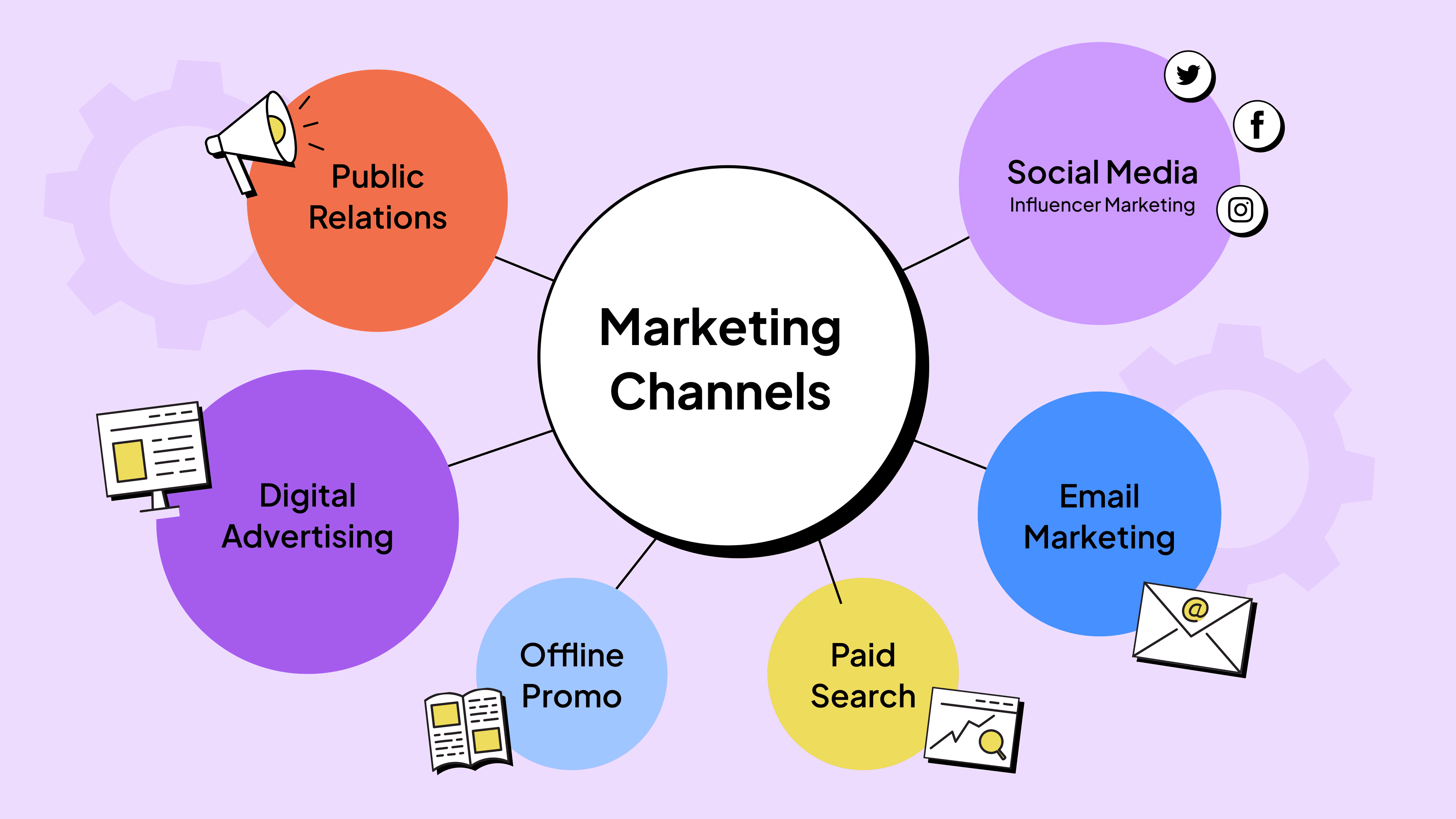How to Ensure GDPR Compliance in Your Cold Emails

Hey there! I've got some interesting insights to share about GDPR emails that might just save you from a major headache. You know how tricky it can be to navigate the world of data protection, right? Well, I've been there, and I want to help you avoid the pitfalls I've encountered when it comes to cold emailing under GDPR.
In this article, we'll dive into the nitty-gritty of GDPR compliance for your cold email campaigns. I'll walk you through understanding GDPR's impact on cold emailing, essential steps to keep your emails on the right side of the law, and how to craft content that doesn't raise any red flags. Trust me, by the end of this, you'll feel a lot more confident about your cold email strategy and how it aligns with GDPR principles. Let's get started!
Understanding GDPR and Its Impact on Cold Emailing
What is GDPR?
The General Data Protection Regulation (GDPR) is a set of security and privacy laws implemented by the European Union (EU) in 2018. It's designed to protect individuals from unnecessary data collection, wrongful use of personal data, and personal data breaches. The GDPR applies to any organization handling the personal information of EU citizens or residents, regardless of where the organization is located.
GDPR aims to increase transparency and accountability between businesses and their customers. It gives users a better understanding of how their personal data is used and provides them with more control over it. The regulation introduces hefty fines for non-compliance, which can reach €20 million or 4% of a company's global revenue, whichever is higher.
How GDPR affects cold email campaigns
GDPR has had a significant impact on cold email campaigns, but contrary to some predictions, it hasn't killed email marketing. Instead, it has made it more trustworthy and relevant. Here's how GDPR affects cold emailing:
- Consent and Legal Basis: Under GDPR, you need a legal basis to process personal data, including email addresses. For cold emails, this often means relying on "legitimate interests" rather than explicit consent. However, you must have a compelling reason to claim that the company you're contacting can benefit from your offer.
- Data Minimization: GDPR requires that you only collect and process the minimum amount of data necessary to achieve your purpose. This means being selective about the information you gather for your cold email campaigns.
- Transparency: You must inform recipients about how you obtained their data and what you plan to do with it. This information should be included in your cold emails.
- Right to Opt-Out: Every cold email must provide a clear and easy way for recipients to opt-out of future communications.
- Data Storage Limitation: You can't keep personal data longer than necessary. While GDPR doesn't specify an exact timeframe, it's advisable to remove non-responsive prospects from your list after about 30 days.
Key GDPR principles for email marketers
To ensure GDPR compliance in your cold email campaigns, keep these key principles in mind:
- Lawfulness, Fairness, and Transparency: Be clear about why you're contacting someone and how you obtained their information. Your cold emails should be relevant to the recipient's business.
- Purpose Limitation: Only use the data for the specific purpose you collected it for. Don't use email addresses gathered for cold emailing in other marketing activities without consent.
- Data Minimization: Collect only the data you need for your cold email campaign. Don't ask for unnecessary information.
- Accuracy: Ensure the data you're using is accurate and up-to-date. Regularly clean your email lists.
- Storage Limitation: Don't keep personal data longer than necessary. Remove non-responsive prospects after a reasonable period.
- Integrity and Confidentiality: Implement appropriate security measures to protect the personal data you process.
- Accountability: Be prepared to demonstrate your GDPR compliance if required.
By adhering to these principles, you can conduct GDPR-compliant cold email campaigns that respect individuals' privacy rights while still effectively reaching out to potential clients. Remember, GDPR isn't meant to stop businesses from communicating; it's about ensuring that communication is fair, transparent, and respectful of personal data rights.
Essential Steps for GDPR-Compliant Cold Emails
To ensure your cold emails align with GDPR principles, it's crucial to follow these essential steps. By doing so, you'll not only stay compliant but also build trust with your recipients.
Obtaining and documenting consent
When it comes to GDPR emails, obtaining and documenting consent is a key aspect of compliance. While explicit consent isn't always necessary for B2B cold emails, you still need a legal basis for processing personal data. This is where the concept of "legitimate interests" comes into play.
To rely on legitimate interests, you must have a compelling reason to believe that the company you're contacting can benefit from your offer. It's important to document this rationale clearly. Keep detailed records of how you obtained email addresses and why you decided to process the personal data of specific EU citizens.
Remember, GDPR requires transparency. In your cold emails, clearly state why you're reaching out and the legal reason for processing data. This approach not only fulfills your information duty but also builds trust with your recipients.
Providing clear opt-out options
Offering clear and easy opt-out options in your cold emails isn't just a best practice – it's a legal requirement under GDPR. Every email you send should include a visible and accessible way for recipients to unsubscribe or opt out of future communications.
This opt-out mechanism serves multiple purposes. It demonstrates respect for recipient preferences, ensures your emails remain relevant and useful, and helps you avoid being perceived as spam. Moreover, it contributes to building trust and credibility with your audience by showing a customer-centric approach.
A simple way to implement this is by including a clear statement at the end of your email, such as: "Not interested? Click here to stop receiving emails like this one." Make sure this opt-out process is straightforward and doesn't require multiple steps or logins.
Remember, once someone opts out, you must respect their wish, erase their personal data, and never contact them again. This aligns with the GDPR principle of data storage limitation, which doesn't allow you to process personal data for longer than necessary.
Ensuring data accuracy and security
Data accuracy and security are fundamental GDPR principles that you must adhere to in your cold email campaigns. Regularly update and cleanse your database to ensure the accuracy and relevance of the data you hold. This not only keeps you compliant but also improves the effectiveness of your campaigns.
When it comes to security, GDPR requires that you implement appropriate measures to protect the personal data you process. This is particularly important if you're using a custom-built tool to manage your prospects' information. Ensure that all subscriber data, including email addresses, is stored securely and used responsibly.
It's also crucial to practice data minimization. Only collect and process the minimum amount of data necessary to achieve your purpose. This reduces the risk of data breaches and aligns with GDPR's data protection principles.
Lastly, conduct regular audits of the data you collect to ensure it's being used and stored according to GDPR principles. This ongoing process of review and improvement will help you maintain compliance and build a reputation as a trustworthy business partner.
By following these essential steps – obtaining and documenting consent, providing clear opt-out options, and ensuring data accuracy and security – you'll be well on your way to conducting GDPR-compliant cold email campaigns. Remember, GDPR isn't meant to stop businesses from communicating; it's about ensuring that communication is fair, transparent, and respectful of personal data rights.
Crafting GDPR-Friendly Cold Email Content
When it comes to gdpr emails, crafting content that respects data protection principles is crucial. Let's dive into how we can create cold emails that are both effective and compliant with GDPR regulations.
Transparent communication about data usage
Transparency is key when sending cold emails under GDPR. We need to be upfront about how we obtained the recipient's information and why we're reaching out. This approach not only fulfills our legal obligation but also builds trust with our recipients.
In our emails, we should clearly state why we're contacting them and the legal reason for processing their data. For example, we might say something like: "I found your name and email address on LinkedIn, and it looks like your company might benefit from our product/service. If you'd rather not hear from me, just let me know and I'll delete your information".
This transparency serves multiple purposes. It demonstrates respect for recipient preferences, ensures our emails remain relevant and useful, and helps us avoid being perceived as spam. Moreover, it contributes to building trust and credibility with our audience by showing a customer-centric approach.
Personalizing emails for legitimate interest
To comply with GDPR principles, we need to have a compelling reason to claim that the company the person works for can benefit from what we offer in the email. Our business activity should be logically connected with the business activity of our prospect.
This is where personalization comes into play. By tailoring our message to the recipient's specific needs or industry, we're not just improving our chances of engagement – we're also demonstrating a legitimate interest in contacting them.
To achieve this, we should:
- Research the prospect's company and role
- Identify how our product or service aligns with their goals
- Craft a message that highlights this alignment
Remember, GDPR allows cold email outreach, but there has to be a real, legitimate reason why we pick a particular recipient for our cold email campaign.
Including necessary disclaimers
Every GDPR-compliant cold email should include certain disclaimers to fulfill our information duty and respect the recipient's rights. Here are the key elements to include:
- A statement informing the addressee how we have processed their information or data
- A brief account of why we are processing it
- Instructions the receiver can follow to change the data we process or exclude their data from our list
Most importantly, we must provide a clear and easy way for recipients to opt-out of future communications. This isn't just a best practice – it's a legal requirement under GDPR. Every email we send should include a visible and accessible way for recipients to unsubscribe or opt out of future communications.
A simple way to implement this is by including a clear statement at the end of our email, such as: "Not interested? Click here to stop receiving emails like this one." We need to make sure this opt-out process is straightforward and doesn't require multiple steps or logins.
By following these guidelines, we can craft cold emails that respect GDPR principles while still effectively reaching out to potential clients. Remember, GDPR isn't meant to stop businesses from communicating; it's about ensuring that communication is fair, transparent, and respectful of personal data rights.
Conclusion
Navigating the world of GDPR-compliant cold emailing might seem daunting, but it's really about respecting people's privacy while still reaching out effectively. By being upfront about how you got someone's info, giving them an easy way to opt out, and making sure your message is relevant to their business, you're not just following the rules—you're building trust. Remember, it's all about finding that sweet spot between being personal and professional.
At the end of the day, GDPR has made email marketing more trustworthy and useful. It pushes us to be more thoughtful about who we're contacting and why, which is good for everyone involved. So, as you craft your next cold email campaign, keep these tips in mind. You'll be well on your way to creating emails that are both compliant and effective, helping you connect with potential clients in a way that respects their rights and showcases your business in the best light. ## FAQs
1. Can cold emails be sent in compliance with GDPR?Cold emailing is not prohibited under GDPR. The regulation merely sets guidelines on how businesses should gather and handle personal data for marketing purposes.
2. What steps should I take to ensure my emails are GDPR-compliant?To send GDPR-compliant emails, utilize a trustworthy email service provider, obtain explicit consent from users for collecting their personal information, include a privacy notice, adhere to your data protection commitments, provide options for users to opt out, regularly audit and clean your mailing list, use a double opt-in process, and maintain records of your processing activities.
3. What are the essential steps to ensure GDPR compliance?To comply with GDPR, follow these seven critical steps: appoint a Data Protection Officer if necessary, thoroughly review GDPR requirements, conduct an information audit, determine your lawful basis for processing data, develop and implement necessary processes, establish comprehensive documentation, and put into place training and policies regarding data protection.
4. How can a company ensure it is GDPR-compliant?To ensure GDPR compliance, a company should follow a 10-step checklist: understand all the data your business collects, appoint a Data Protection Officer, create a GDPR diary, assess your data collection requirements, report data breaches immediately, and be transparent about the motives for data collection.



